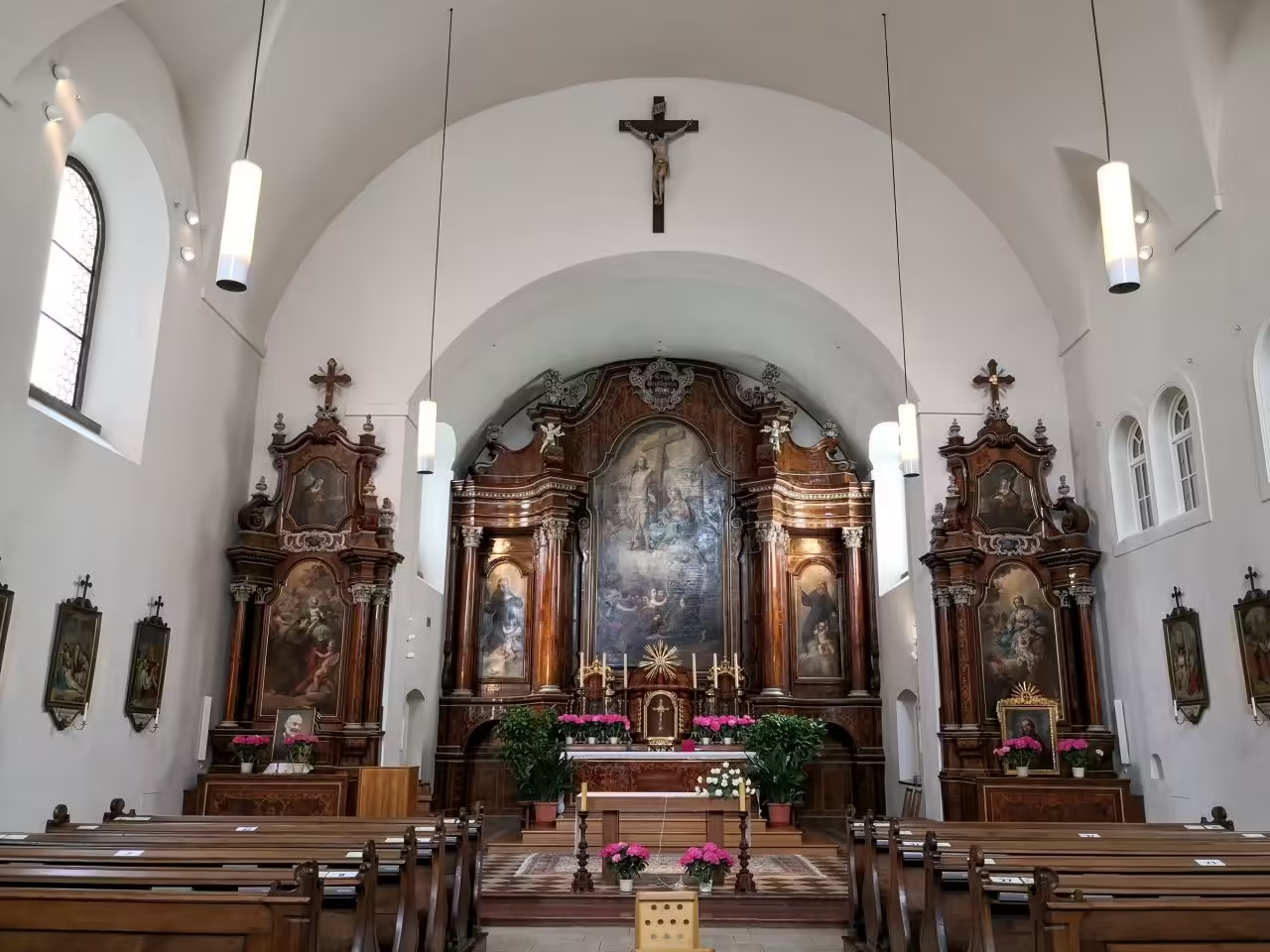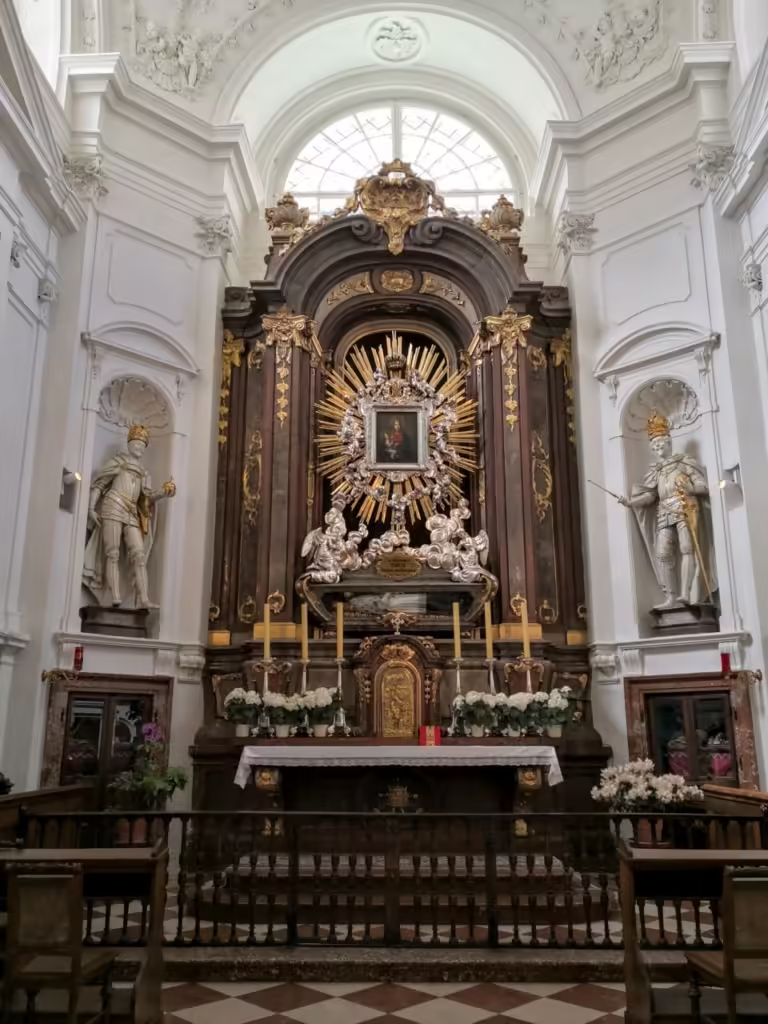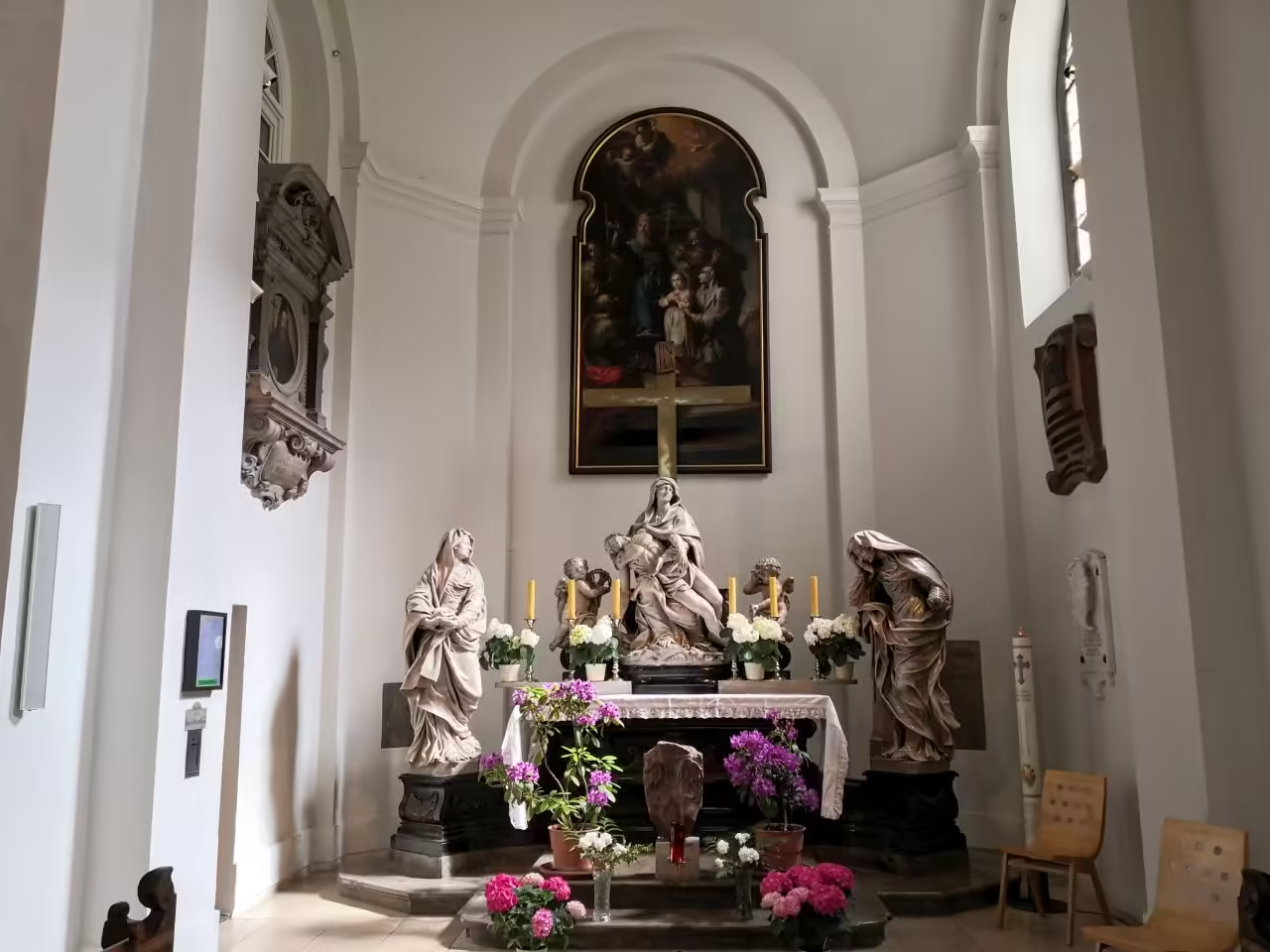
Address
Tegetthoffstraße 2, 1010 Wien
GPS
48.2055342, 16.3699357
Nestled in the heart of Vienna (Tegetthoffstraße 2, 1010 Wien, Neuer Markt), the Capuchin Church stands as a testament to the city’s rich history and architectural brilliance. This simple, yet stunning church not only serves as a spiritual haven but also houses tales of Austria’s most notable figures. As you step inside, you’re transported into a world where art meets reverence, and every corner whispers stories from centuries past.
Whether you’re an architecture enthusiast or simply seeking a moment of tranquility amidst your travels, the Capuchin Church promises an unforgettable experience that blends beauty with deep-rooted significance. Ready to explore everything this remarkable site has to offer? Let’s dive right in!
History and Significance of the Church
The Capuchin Church in Vienna, officially known as the Church of St. Mary of the Angels, has a rich history intertwined with Austria’s royal heritage. Founded in 1617, it served as a spiritual hub for the Capuchin order.
Over centuries, it became a burial place for many members of the Habsburg dynasty. This connection to royalty underscores its cultural importance. The church symbolizes not only religious devotion but also serves as a testament to Austria’s historical narrative.
Architecturally, it reflects Baroque influences and features stunning details that captivate visitors. Its serene atmosphere invites contemplation and reverence.
Throughout its history, the church has witnessed significant events and changes within society. Today, it stands not just as an architectural marvel but also as a reminder of Vienna’s profound past and enduring traditions.
Architecture and Design of the Church
The Capuchin Church facade was completely redesigned in 1935/1936 and reconstructed based on old plans by Professor Otto Wytrlik and Professor Ludwig Tremml (large terracotta cross, surrounded by frescoes by Rudolf Holzinger ). The use of light-colored stone adds a soft glow, enhancing its majestic presence.

The interior design also integrates elements of simplicity typical of Capuchin monastic life—an intentional contrast to the opulence found elsewhere in the city.
Visitors should take note of the unique altar piece, which showcases exquisite craftsmanship and invites quiet contemplation. Each corner reveals something special, making every step through this sacred space an adventure for the senses.
Construction on the church ended in 1632 after the effects of the Thirty Years War delayed completion. The Capuchin Church is a simple church, which has also undergone some renovations and was completely renovated in 2016.
It is a single-nave hall church with barrel vaults, a small vestibule and two side chapels. To the right of the nave is the Pietà Chapel, to the left the Imperial Chapel, which is eye-catching with its splendid high altar. There is an organ in the western part of the nave.
How close the connection was between the Imperial and Royal Army and the Capuchin Church is shown by the numerous votive memorials executed as wall reliefs, which some units dedicated to their comrades who died in the First World War. They are located both in the main nave and in the side chapels.
The harmonious blend of art and spirituality makes it not just a church but an immersive experience steeped in history and faith.
Famous Burials at the Church
The Capuchin Church in Vienna is not just a place of worship; it’s a final resting spot for some of Austria’s most notable figures.
Among those interred here are members of the Habsburg dynasty, including Emperor Franz Joseph and his beloved wife, Empress Elisabeth. Their ornate tombs reflect both their status and the artistic craftsmanship of the era.
Also buried within these hallowed walls is Archduke Ferdinand Maximilian, whose life was steeped in intrigue and tragedy. His story resonates deeply with visitors intrigued by royal history.
As you wander through the church, each grave tells tales that echo centuries of Austrian heritage. The sepulchers often feature elaborate sculptures and symbols reflecting the lives they commemorated. This adds an intriguing layer to your visit—each step deepens your connection to Austria’s past.
Visitor Information – Opening hours, admission fees, and guided tours
The Capuchin Church in Vienna welcomes visitors throughout the year. Typically, it opens its doors from 9 AM to 6 PM daily (from 10 AM on weekends). However, hours may vary during holidays or special events, so it’s wise to check ahead.
Admission is usually free for those wishing to explore the church itself. For a deeper understanding of its history and significance, guided tours are available at a nominal fee. These tours often provide insights that enrich your experience. Guided tours also include Kaisergruft, Imperial Crypt.
Audio guides can also be rented for self-guided explorations if you prefer going at your own pace. This flexibility allows you to absorb the atmosphere of this remarkable church in a way that suits you best.
Make sure to verify current visitor info on their official website before your visit!
Things to See and Do at the Church
The Capuchin Church is a treasure trove of art and history. Visitors are immediately drawn to the stunning altarpiece, which showcases intricate details that tell stories from the Bible.
Don’t miss the famous Crypt, where many notable figures rest. The sight of ornate tombs makes for an intriguing exploration into Austria’s royal past.

As you wander through the nave, admire the frescoes that adorn the ceiling. They offer a glimpse into baroque artistry at its finest.
Take time to observe daily rituals if you’re there during mass; it adds a spiritual dimension to your visit.
For those interested in photography, every corner presents unique angles and lighting that capture both grandeur and serenity.
And remember to pause in quiet reflection amidst this historical setting—it’s a moment worth savoring when visiting such an iconic landmark like Capuchin Church in Vienna.
Tips for Visiting the Capuchin Church
When planning your visit to the Capuchin Church in Vienna, consider going early in the morning. The tranquility of the quiet hours offers a unique atmosphere for reflection.
Dress modestly, as this is a place of worship. Comfortable shoes are also recommended since you may want to explore both inside and outside.
Photography is allowed, but be respectful of others who might seek peace within its walls. Avoid using flash during your visit.
Take time to read about the history displayed throughout the church. Each artifact tells a story that enhances your experience.
Don’t hesitate to ask questions during guided tours—they’re an excellent way to uncover hidden gems and secrets about this magnificent site.
Personal Experiences at the Church
Visiting the Capuchin Church in Vienna can be a deeply personal experience. As you step inside, the tranquil atmosphere envelops you. The soft light filtering through the stained glass creates an almost ethereal ambiance.
Wandering through the pews, it’s easy to feel connected to centuries of worshippers who have sought solace here. A moment spent in quiet reflection by the altar invites introspection and gratitude.
The crypt below tells stories of Austria’s past rulers and notable figures, stirring emotions as their legacies are honored within these walls. Each tomb has its own tale, sparking curiosity about lives once lived.
For many, lighting a candle offers comfort—a symbol of hope or remembrance for loved ones. The simplicity of this gesture resonates powerfully amid grand architecture.
Those who pause to listen may even catch whispers of history—the echoes of prayers and hymns that linger long after visitors depart.
Conclusion
The Capuchin Church in Vienna is more than just a place of worship. It stands as a testament to the city’s rich history and architectural beauty. From its serene atmosphere to the intricate details of its design, every corner invites exploration.
Visitors can immerse themselves in centuries of significance while admiring remarkable art and architecture. The church not only houses famous burials but also offers an experience that connects you with Austria’s historical narratives.
Whether you’re drawn by spirituality or simply curious about history, this beautiful church caters to all interests. Plan your visit around guided tours for deeper insights or enjoy quiet moments alone amidst its grandeur.
The hours spent at the Capuchin Church are sure to leave lasting memories. So when you’re in Vienna, make it a point to include this gem on your itinerary—it promises a unique blend of culture, history, and tranquility that is hard to find elsewhere.
